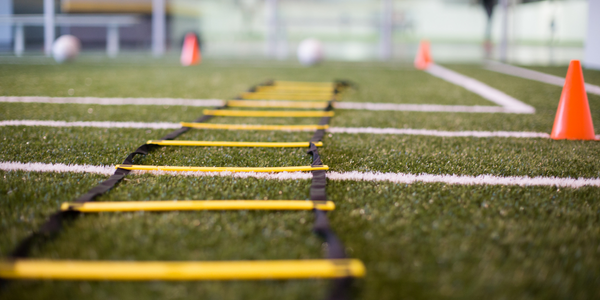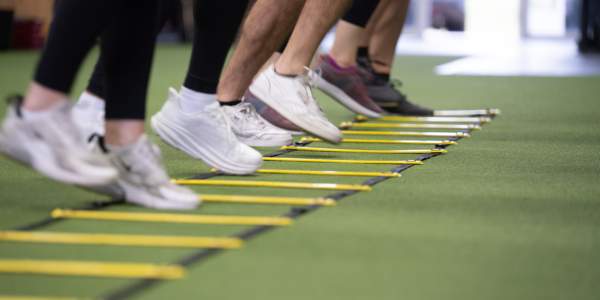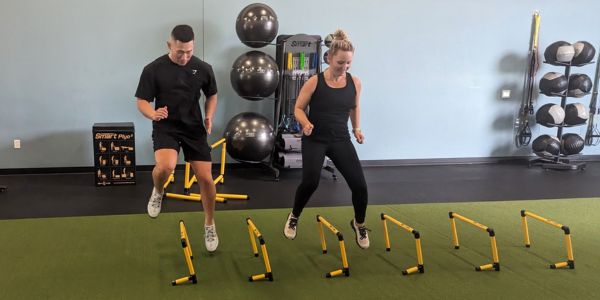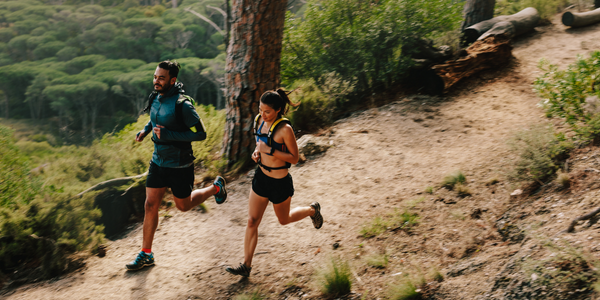Trail running is more than just putting one foot in front of the other. It’s about navigating the unpredictable, whether it’s technical terrain, rocky paths, steep climbs, or slippery descents. Agility plays a crucial role in this adventurous sport, and a quick shift in weight can mean the difference between maintaining your pace and tumbling down a slope. Whether you’re tackling a technical trail for the first time or preparing for your next long run, agility is key. By enhancing your agility, you’ll gain control and confidence on every trail, from local parks to remote areas.
In this article, we’ll unveil seven powerful secrets designed to boost your agility and elevate your trail running experience. From selecting the right trail-running shoes to incorporating strength and balance exercises into your routine, these tips will not only improve your performance but also reduce the risk of injury.
Ready to conquer those rugged terrains with greater finesse? Let’s dive in!
Understanding Agility

Agility in the world of trail running is more than just a buzzword; it represents a runner’s ability to move quickly and easily across diverse terrains. Whether you’re on technical trail sections with tree roots and rocks or facing elevation gains on steeper gradients, agility encompasses quick decisions, rapid directional changes, and maintaining balance on uneven surfaces. When you encounter river crossings, steep climbs, or rugged terrain during long days on the trail, your agility enables you to navigate those obstacles smoothly without losing speed or stability.
Agility significantly enhances your overall performance, especially on trails that vary in terrain within short distances. For example, agile runners can dynamically shift their weight when approaching steep downhill sections or navigating flat ground. Improved agility also helps prevent common trail injuries, such as sprained ankles, by reinforcing core stability and balance.
But the benefits of cultivating agility reach well into realms outside trail running itself. Improved agility through focused training can lead to greater injury prevention due to enhanced coordination and balance capabilities. For example, consistent engagement in agility drills helps strengthen lower body muscles while also reinforcing core stability—which reduces the risk of strains and sprains during runs and daily activities alike. Moreover, these improved motor skills carry over into other athletic pursuits and everyday movements such as climbing stairs or participating in various sports—making one more adept in multiple contexts. Embracing agility as part of your training isn’t just about improving your times; it’s about building a well-rounded foundation for all aspects of fitness and wellness.
Proper Footwear Selection

Selecting the right shoes is one of the most important steps for trail runners. The best way to tackle rugged trails is with shoes designed specifically for the terrain. Trail-running shoes with the right tread pattern and proper grip allow you to navigate technical terrain with confidence. Shoes with deep lugs are ideal for muddy or rocky surfaces, while more minimal shoes may suit local trail runs in your local park.
Comfort is key, especially for longer distances. You want shoes that fit well, whether you’re out for short runs or training for your first trail race. Look for footwear that offers cushioning and protection on rugged surfaces and accommodates the dynamic movements required on technical terrain. Remember, the right shoes can be the difference between a good time and a rough experience, particularly during long runs or night runs.
Ultimately, investing time into selecting the proper footwear tailored for both your personal comfort and trail variety is an empowering step toward boosting agility on your runs. Whether you’re venturing out for a casual jog or preparing for a challenging adventure race, choosing the right pair will enhance your overall experience while promoting safety on those beautiful but unpredictable trails.
Strength Training Essentials

Strength training is essential for enhancing agility and handling rough terrain. Targeting your core, legs, and hip flexors will improve your ability to tackle steep grades and rocky descents. Incorporating exercises like squats, lunges, and plyometric exercises such as jump squats will build leg strength and explosive power, critical for navigating trail features like tree roots and steep climbs. Strong muscles in your lower body will help maintain your forward momentum on difficult trails.
For added agility, include exercises that mimic trail-running movements. Incorporate plyometrics to build power and quickness, which is especially useful for tackling elevation gains and steep gradients. These strength exercises will translate into better agility and balance when navigating trail conditions.
To successfully integrate strength training into your routine, start by scheduling two to three sessions per week dedicated to building muscle. This doesn’t mean spending hours at the gym—short, focused workouts that include both free weights and body-weight exercises can yield great results in less time. Aim for around 30-45 minutes per session where you complete circuits that include squats, lunges, planks, glute bridges, and rows. Add in explosive movements such as jump squats or box jumps occasionally to mimic the quick bursts of energy required in trail running.
Lastly, consider engaging in functional training methods that simulate trail running conditions more closely. Incorporate uneven surfaces or elevated platforms whenever possible—this helps develop proprioception (your body’s awareness of its position) which is vital when you’re out on rugged trails. By ensuring a balanced approach blending strength training with your regular running schedule you’ll find yourself feeling more agile than ever before on those challenging runs!
Balance Exercises to Incorporate

When navigating technical trail sections or uneven surfaces, balance is essential. To improve balance, exercises like single leg stands and balance board routines help build the stability needed for rugged trail runs. Trail running often requires adjusting to quick changes in terrain, so maintaining a shorter stride and using your arm swing for added stability will help on technical terrain.
Balance exercises also help prepare you for the challenges of remote areas, river crossings, and steep grades. Make these exercises a regular part of your running routine to minimize the risk of injury and enhance your performance on both long and short runs.
For those looking to take their training further at home, consider investing in tools designed specifically for enhancing balance. Balance boards are excellent devices that create instability, forcing your body to engage various muscle groups actively while stabilizing yourself. Integrating these boards into your workouts can provide a different form of training stimulus that translates directly onto dynamic trail scenarios. They allow for creative exercise routines where you can combine core work with fun challenges to keep things fresh and engaging.
An essential aspect of improving balance is consistency; incorporate these balance exercises into your weekly training routine alongside strength workouts and runs. Gradually increasing the difficulty of each exercise will ensure ongoing progress in both stability and agility as you prepare for upcoming trail adventures. Remember that better balance will not just help you run more efficiently but can also instill greater confidence during unpredictable trail conditions—an invaluable asset for any outdoor enthusiast!
Speed Drills and Techniques

Improving your speed and agility on the trails requires the right technique. Interval training is a great way to boost speed while enhancing coordination. For instance, on flat ground or slight downhill sections, sprint for 30 seconds, followed by recovery jogging. This practice builds speed and the endurance necessary for longer runs or tackling more difficult trails.
Another crucial aspect to consider in developing speed is to experiment with variations in stride patterns. Speed workouts don’t just mean sprinting; they can include changing your stride’s length or frequency to find what feels most efficient on the various terrains you encounter. Incorporating drills like “bounding” or “high knees” as part of your warm-up routine can help activate different muscle groups while improving coordination and body awareness as you navigate uneven ground—a skill that will serve you well on more technical trails.
Hill sprints are another great way to build strength and speed simultaneously. Tackling hills during training runs improves leg power and helps with acceleration, which is critical for maintaining a faster pace on rugged terrain. Whether it’s your first trail run or your next run on a more technical trail, speed drills are the perfect way to build endurance and agility.
Incorporating these speed drills into your training regimen can make a significant difference in both your pace and agility over time. Always listen to your body, give yourself adequate rest between intervals, and adjust the intensity based on how you feel each day. As each workout progresses, you’ll discover newfound freedom in movement that translates well during races or leisurely runs through nature’s beauty!
Practicing Dynamic Movements

Dynamic movements are a great way to prepare your body for unpredictable trail conditions. Incorporate dynamic stretches like high knees, butt kicks, and leg swings to warm up before your run. These movements mimic trail-running motions, improving flexibility and reducing injury risk. Dynamic warm-ups, coupled with plyometric exercises, will ensure you’re ready to tackle the entire trail, from rough terrain to smooth paths.
Plyometrics play a significant role in enhancing quickness on trails through explosive movements that build strength and coordination simultaneously. Exercises like jump squats or box jumps reinforce fast-twitch muscle fibers essential for rapid directional changes while running on uneven surfaces. Adding plyometric workouts into your training program can help develop power and speed—vital traits when you’re faced with steep ascents or sudden drops on tracks. Focus on incorporating these exciting movements two to three times per week to boost both agility and overall performance.
By integrating dynamic stretches into your warm-up routine alongside plyometric training sessions, you’ll be setting yourself up for success out on the trails. As you practice these movement patterns regularly, you’ll notice not only an improvement in your agility but also an increase in comfort during runs as your body becomes more adept at handling varied terrain challenges effectively. So lace up those trail shoes and get moving!
Mindfulness on the Trail

Agility is not just physical; mental focus is equally important. Trail running demands awareness of the trail ahead—whether you’re navigating tricky trail-running techniques or running in remote places. Being mindful helps you react quickly to changing conditions, alert people on the trail, and remain prepared for wildlife or unexpected obstacles.
To foster this mental connection while conquering challenging trails, consider setting specific focal points throughout your run. For instance, choose a line of rocks or a series of trees to guide your vision as you maneuver over roots and dips. Engaging with your environment encourages a flow state where you’re immersed in the experience rather than overwhelmed by it. Practice techniques such as deep breathing and progressive muscle relaxation before hitting the trails; these approaches can help center your thoughts, enhancing your ability to maintain concentration as conditions change unexpectedly.
Visualization is another powerful tool for trail runners aiming to boost their agility. By picturing yourself navigating tricky sections of a trail beforehand—such as bobbing between boulders or gliding over fallen branches—you prepare both mentally and physically for those situations when they arise. Spend time reviewing different routes in advance if possible, visualizing altering terrain features so they become second nature once encountered on foot. This psychological preparation prepares you not only for known challenges but also “what-if” scenarios that may occur out on more unpredictable courses.
Practicing mindfulness keeps you present in the moment, making it easier to adapt to varied terrain and unpredictable environments. Visualization techniques can also be beneficial; imagine yourself successfully navigating technical sections or conquering steeper gradients before hitting the trails. Mindful running enhances agility and helps you stay mentally sharp throughout the run.
Embrace Your Agile Journey
In conclusion, boosting your agility in trail running requires a combination of proper footwear, strength training, balance exercises, speed drills, dynamic movements, and mindfulness. Each tip plays a vital role in enhancing your ability to navigate challenging terrains effectively. Remember to approach these secrets gradually. Focus on one aspect at a time and watch how your overall performance improves.
Lastly, remember that patience is key as you integrate these components into your routine. Progress takes time, especially when developing agility along challenging trails. Celebrate small victories—like completing a tricky section of terrain or mastering that single-leg stand—and adjust your plan as needed based on how your body feels each week. With dedication and consistency in applying these strategies, you’ll cultivate agility that not only enhances your trail running experience but also leads to lasting enjoyment in the great outdoors.






